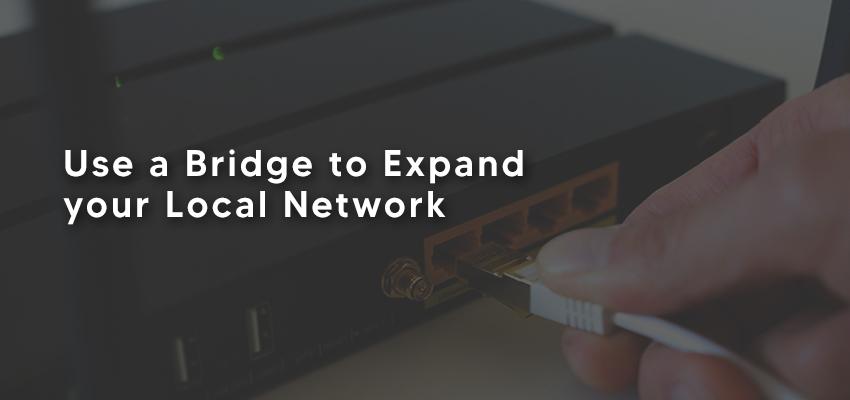
Using Bridge to Expand your Local Network
Posted Nov. 4, 2020, 2:43 a.m. by Emil S.Two separate networks may be joined through a network bridge. The network bridge facilitates the communication between the two different systems providing a method for it to perform as a single network. The bridges then extend a wider geographical area of what local area networks usually reach or cover. Bridges are like simple repeaters as they also expand the range of the signal, but the former is more intelligent than the latter.
How Do Network Bridges Work?
According to its extended destination, bridge devices review incoming network traffic and verify whether the traffic will be forwarded or discarded. For instance, in the case of an Ethernet, it verifies every incoming Ethernet frame, including destination MAC addresses and its source, when it administers each forwarding assessment. The bridge devices maneuver the data-link layer of the OSI model. Thus, it is a device that separates the network into a section.
Types of Network Bridges
Bridge devices operate Wi-Fi to Ethernet, Wi-Fi to Wi-Fi, and Bluetooth to Wi-Fi connections. Individually, they are created for a particular kind of networking.
- A wireless bridge supports Wi-Fi wireless access points.
- Wi-Fi to Ethernet bridges permit connections to Ethernet clients and interface to a local Wi-Fi network necessary for older network devices that lack Wi-Fi proficiency.
- For Bluetooth mobile devices, a Bluetooth to Wi-Fi bridge then supports its connections.
Wireless Bridging
On Wi-Fi, computer networks bridging is used. On a Wi-Fi network, wireless bridging necessitates access points to communicate via a particular mode that supports the traffic runs between them.
It works as a pair of two access points that support the wireless bridging mode. While communicating with the other to control the bridging traffic, it individually supports the local network of clients connected to it. Through an administrative setting or physically switching on the unit, the bridging mode is activated on an access point.
Bridges vs. Repeaters
Network repeaters distribute the same physical appearance as the Bridges. Occasionally, a single unit carries out both functions. Nonetheless, repeaters do not carry out any filtering traffic and do not link two networks, unlike bridges. As an alternative, repeaters permit along with the traffic that they obtain. Repeaters primarily serve to restore traffic signals, so that a single network can range a wider physical distance.
Bridges vs. Switches and Routers
Bridges operate an analogous function as network switches in wired computer networks. Usually, wired bridges control and support one outgoing and one incoming network connection accessible via the port of hardware. On the other hand, switches typically offer four or more hardware ports. Because of this reason, regulators are somehow called a multiport bridge. Bridges, however, are deficient in the intelligence of network routers. Theoretically, bridges do not recognize the idea of remote networks. Also, bridges cannot redirect the messages to separate locations actively. But instead, it only operates one outside the interface.
